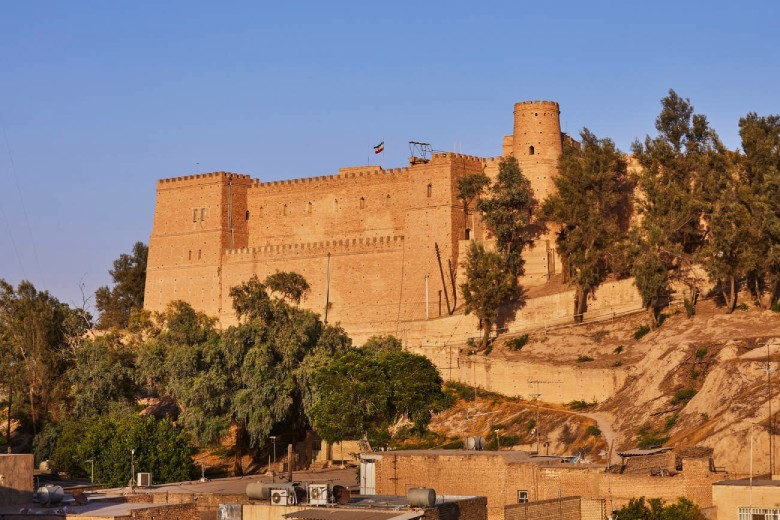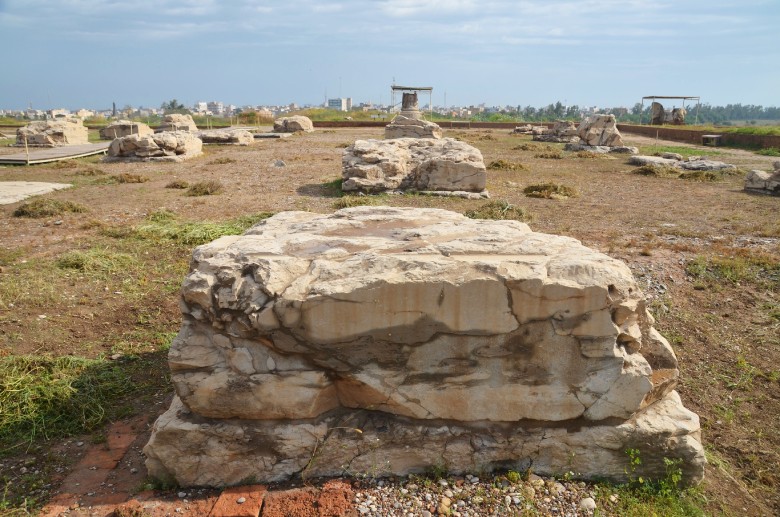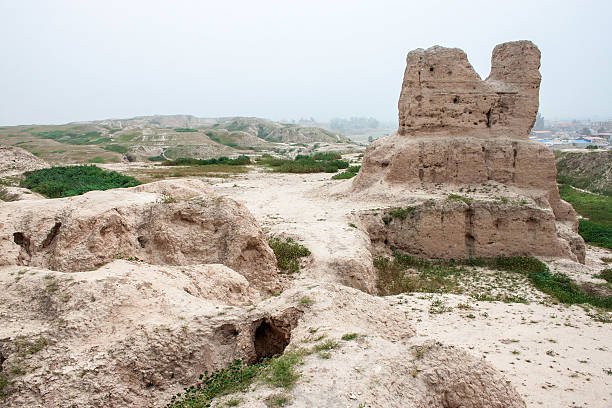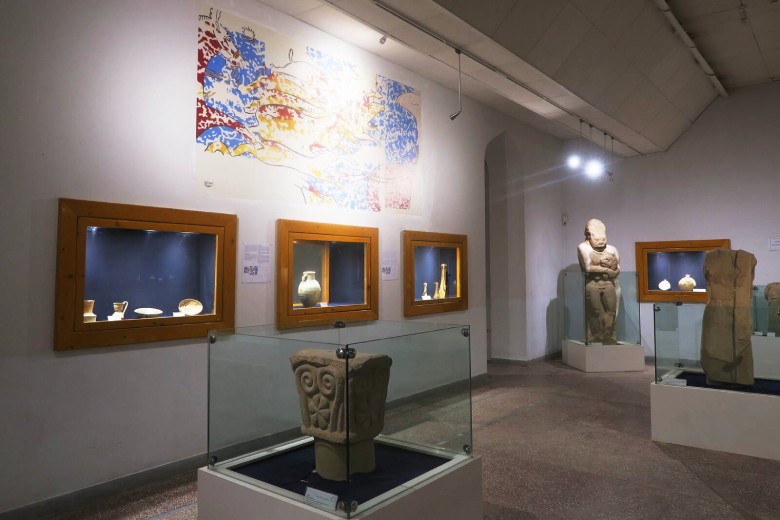Shush Castle: A Historical Landmark in Khuzestan
A Guide to Accessing Shush Castle: Routes and Tips

Shush Castle, also known as the French Castle, is a significant historical site in the Khuzestan province of Iran.
This castle, while seemingly ancient, is actually just over 100 years old, constructed during the archaeological digs that took place at the ancient site of Susa.
Intriguing Facts About Shush Castle
- Historical Reuse of Materials: Shush Castle was constructed in the late 19th century using bricks from the ancient ruins of Susa, integrating pieces of history into its very structure.
- French Architectural Influence: Designed by French archaeologists, the castle mimics medieval European architecture, making it a unique historical anomaly in the region.
- Strategic Location: Built on the site of an ancient acropolis, Shush Castle overlooks the historical area of Susa, offering panoramic views that span across millennia of civilization.
- Archaeological Significance: The castle not only serves as a historical monument but also houses a museum that displays artifacts found in Susa, including cuneiform tablets and items from various dynasties.
- Cultural Symbol: Shush Castle has become a symbol of the cultural heritage of the Khuzestan province, representing a blend of ancient history and colonial architectural styles.

It’s a treasure trove of history and architecture, reflecting a blend of Iranian and European influences, perfect for those fascinated by history and architectural fusion.
Located in the city of Shush on Talaghani Street, Shush Castle sits atop the Acropolis hill, just two kilometers from the city center.
SURFIRAN Tours
Best Iran Tours
The castle’s proximity to major historical sites like the Shush Museum, Apadana Palace, and the Tomb of Daniel makes it a strategic spot to explore the rich heritage of one of Iran’s oldest cities.
Contents
Access Routes to Shush Castle
To visit Shush Castle from Ahvaz, travelers should head north via the Ahvaz-Shush highway (Highway No. 37). After about 115 kilometers, take a U-turn at the roundabout and enter Imam Khomeini Boulevard in Shush. Continue straight through two roundabouts, then turn left shortly after the second one.

Choose the left path at the upcoming fork, and proceed straight at the next roundabout to find Shush Castle on your right.
From Dezful, head southwest and enter the Dezful – Safiabad road. Shortly after, merge onto the Dezful – Shush highway and continue to the Ahvaz – Shush highway.
Take the first U-turn on this highway and follow the directions previously described to reach Shush Castle.
The History of Shush Castle

The story of Shush Castle begins with the archaeological explorations of the Susa site. The first archaeological activities at the ancient mound of Susa were started in 1851 by William Kennett Loftus.

About 30 years later, French explorers Marcel-Auguste Dieulafoy and his wife Jane played a crucial role in initiating further excavations funded by the Louvre Museum.

Their efforts paved the way for an official excavation campaign, starting on December 7, 1884. Despite local opposition and natural disasters, which the locals believed were due to the foreign team’s disrespect towards the Tomb of Daniel, Dieulafoy and his team managed to uncover significant artifacts, although many were later transported to France.


Constructed in the late 1890s by the French archaeologist Jean-Marie Jacques de Morgan, the castle served as a fortified base for archaeological activities. It exemplifies the methods of the early era of archaeology, characterized by the invasive and often destructive techniques used during explorations.
Interestingly, the construction of the castle involved the repurposing of materials from significant historical sites, including bricks from the palace of Darius the Great at Susa and cuneiform inscribed bricks from Chogha Zanbil, which unfortunately led to damage to parts of these ancient structures.
After the 1979 Iranian Revolution, the castle was transferred from French ownership to the Islamic Republic and has been repurposed as a museum.
The structure experienced considerable damage during the Iran–Iraq War but has been restored since then.
Shush Castle was constructed using bricks and artifacts from various eras found at the Susa site, including inscribed bricks from the Elamite period, under the supervision of Jacques de Morgan who led the French archaeological mission. The architecture of the castle reflects a medieval European influence combined with traditional Iranian elements.
Architectural Highlights of Shush Castle

Shush Castle is renowned for its trapezoidal plan and massive structure that mirrors medieval European fortress designs, particularly resembling the Bastille in Paris.
The castle’s architecture is a unique blend of European and Iranian styles, evident from its exterior resembling a European castle while the interior archways and portals echo Iranian design.
The castle features a complex layout with multiple courtyards and a distinctive arrangement of rooms and official spaces, designed to house the artifacts and serve as the operational base for the French archaeological team.
Today, it also serves as a museum showcasing relics from the area, although access is limited due to structural vulnerabilities.
Visiting Shush Castle

Shush Castle is open to visitors from 8 AM to 8 PM in the first half of the year and from 8 AM to 5 PM in the second half, except on specific public holidays.
The best time to visit is during early spring, autumn, or winter, when the weather is more temperate. Tourists are advised to avoid the extreme heat of the summer months.
Exploring the Historical Site Near of Shush Castle

Shush Castle, a striking architectural piece built with bricks from the ancient city of Susa, serves as a prominent landmark and museum in the region.
Built in the style of medieval European castles, it provides a fascinating glimpse into the historical narrative of the area.
Visitors to Shush Castle can also explore several nearby sites that enrich their understanding of this historically rich region.
Susa Archaeological Site

Just steps from Shush Castle, the Susa Archaeological Site is one of the oldest continuously inhabited sites in the world.
Visitors can explore the remnants of various civilizations, including the Elamite, Persian, and Parthian empires, through its palaces, temples, and residential complexes.
The Tomb of Daniel

Near Shush Castle, the Tomb of Daniel is an important religious site for both Jewish and Muslim communities.
This shrine, believed to house the remains of the prophet Daniel, is notable for its spiritual significance and the unique tradition of the river that flows underneath it, which is said to protect Daniel’s remains.
Apadana of Susa

A short walk from Shush Castle, the Apadana was once part of the grand palace complex of Darius the Great. Its ruins, especially the colossal pillars, provide insight into the architectural grandeur of the Achaemenid Empire and its influence over the region.
The Acropolis of Susa

Adjacent to the castle, the Acropolis of Susa offers further archaeological insights with its layered history visible through the city’s ancient urban planning and defensive structures, showcasing the strategic importance of Susa through various historical periods.
Museum of Susa

Located within Shush Castle itself, the Museum of Susa contains a wealth of artifacts excavated from the Susa site and its surroundings. This includes cuneiform tablets, pottery, and other relics that illustrate the cultural and historical developments of the region.
Book Services, Pay Online
Conclusion
Shush Castle stands not just as a historical edifice but as a testament to the layered histories of Iran, offering insights into its archaeological past and the complex interplay of cultures across centuries.
For history enthusiasts and travelers alike, it offers a fascinating glimpse into Iran’s rich heritage, preserved amidst the challenges of modern conservation.
Read More











